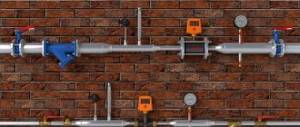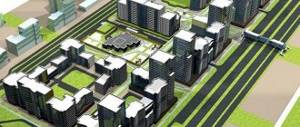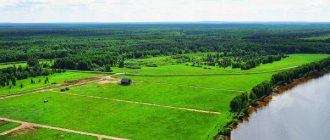When people are interested in the question: how many acres are in a hectare of land, this usually indicates land users or people who are just planning to purchase land for farming.
When we hear about hundreds or hectares, it immediately becomes clear that we mean the area of land. It is important to be able to measure a piece of land and translate the obtained data into the measurement measure that will be more appropriate in a given situation.
So, if land is purchased for a summer cottage, then future buyers want to know how many acres the plot occupies. If they plan to build a house on the land, then it is advisable to clarify the area in hectares.
The emergence of systems of units of measurement
Ever since ancient tribes began to move across territories, cultivate the land and grow crops on it, the need arose to measure the area of land or its individual sections.
Land area was measured in quantities, the names of which changed in different eras. These values were not entirely accurate. With the development of society, economy and trade relations, measurement measures became more advanced.
If in Russia they often used tithes, square fathoms, and versts, then other nations had other units of area. To some extent this was inconvenient, for example, when conducting foreign trade. Therefore, it was decided to come to a common system.
It was possible to systematize units of measurement in 1960, when the international system of measurement - SI - was approved. All countries use SI. When using this system, all length or distance measurements are made in meters, and for area calculations - in square meters.
How to convert square meter to hundredths without a calculator?
Of course, no one forbids using a calculator. And you can always find out the desired value online, through the same Yandex. To do this, enter the values here:
But in fact, knowing these values, you can use any calculator. For example, count on your phone, or just in your head. Better yet, keep this reminder in your head at all times so that you can quickly make calculations at any time:
Why do we need hectares and acres?
In the Russian Federation, any land area is measured in hectares. Officially, the area can be measured using square meters (according to SI).
As a rule, the area of land for payment of land tax is determined in ha. The calculation method is as follows: measure the length and width of the site - determine its area. The result is converted into points and a personal coefficient is applied.
Hectares are used in the sectors of urban planning, agriculture, forestry, and when planning land management work. In addition, this unit is widely used in sports. The football field during construction is calculated exclusively in Ga.
Acres, as units of area, are used in the case of purchase and sale of land.
Detailed instructions:
Let's take, for example, a rectangular plot with sides of 33 and 48 meters. Initially, you need to find out the area of this site. For this procedure, use the formula to calculate this area, where it is equal to the product of the lengths of the two sides. By multiplying the above numbers, we find out the area S 33*28 = 924 square meters.
And so they found out that the area is 924 square meters. From the designation of a hundred it follows that it is equivalent to a plot with an area of 100 square meters. meters. And to find out how many acres there are in such a plot of 924 square meters, you need to divide 924 by 100 and you will get the answer in the required acres. Namely 924/100 9.24 acres, or 9.24 ara, which is the same thing.
If the area of the calculated plot has more than 100 acres, then another unit of measurement is used for this - a hectare. There are 100 acres in a hectare, or 100 ares. That is, when the area of the measured plot is 30,000 square meters, then it is also equal to 300 acres, or 3 hectares.
Important! The number of acres depends only on the actual area of the plot, and not on its geometry. If, for example, you calculate a section that has a round shape, then the calculation procedure remains the same. First, calculate its area, and then convert the result into hundredths by dividing by one hundred.
Author of the publication
offline for 2 weeks
One hectare - how much in square meters
The term “hectare” came into use after 1917, and the abbreviated “Ha” appeared 13 years later.
Hectare is not included in the SI. However, in legislative acts (in particular, in the Land Code) the concept of “hectare” is often found. This is due to the fact that in Russia it is allowed to use this unit for an indefinite period.
When preparing documents, filling out a land tax declaration, you must indicate the area in square meters.
1 Hectare is a unit of measurement that is equal to the area of a square with a side of 100 meters.
If the length and width of the plot are 100 meters, then its area will be 1 hectare, that is, 10 thousand square meters.
Calculating the area in hectares is not difficult. It is enough to know the length and width of the area. The calculation is made as follows:
- We multiply the length by the width to find out the area.
- If the result is a figure of more than 10 thousand square meters, then the area of the site will be more than one hectare.
- To find out the exact area in hectares, you need to divide the result in hectares by 10,000.
For greater convenience and time saving, you can calculate Ha using an online unit calculator (https://kalkulator.pro/are-to-hectare.html).
If you don’t have the Internet at hand, you will have to calculate hectares and acres yourself, knowing certain secrets of converting one unit to another.
Conversion of linear meter to m3
Now that you know how the linear meter to square meter conversion works, let's see together if it is possible to convert a linear meter to m3 (or cubic meter).
It's not possible to convert a cubic meter (which represents volume) to linear length, and you also can't convert m2 to m. Just because the two units are "meters" doesn't mean they represent the same thing. One unit represents length (linear meter), another represents volume (m3), and the third represents area (m2).
But we can calculate the volume of a spatial figure, knowing its linear dimensions in linear meters.
One hundred square meters of land - how much is it?
The word “weave” comes from the number one hundred. A hundred square meters of land means an area that is equal to one hundred square meters, or a hundred square meters is equal to 1 are.
1 Ap is a non-SI unit. If we multiply the length and width of an equilateral rectangle (with a side of 10 m), we get its area of 1 Ar. By the way, in France, Ar is the unit that is used officially.
On the ground, you can measure the area by taking approximately 12-14 steps. Then you need to turn 90 degrees and do the same. In this way you can see a square equal to a hundred.
Typically, the calculation of a plot in acres is used in cases where the land is sold, used for construction or as a garden plot. It is worth noting that “weaving” is used in colloquial speech and is not found anywhere in official documents.
What determines the price of the service?
The price is calculated individually . The final calculation of the estimate is made only after a detailed analysis of the territory and inspection of the condition of the soil composition.
Factors determining the cost of work:
- Alignment method.
- Land area.
- Soil type. The more complex it is, the more expensive the price (sandy, garden and previously cultivated soil is considered light, while clay and loamy soil, lawn grass, and wetlands are considered complex).
- Number and level of elevation changes.
- Presence of construction debris and other obstacles.
- Cost of materials for backfilling.
- Equipment and technology used.
- Cost of manual excavation activities.
- Ground water level.
- Availability of utilities.
Based on these criteria, the technical staff and the required number of workers are selected.
There are several ways to level the terrain. The choice will depend on the task at hand and the characteristics of the soil.
- Using a tractor or walk-behind tractor . The best option for eliminating uneven soil 20-30 cm deep. It is especially in demand when preparing a site for landscaping with a lawn. The first stage - the soil is plowed ( 320-360 rubles per 1 hundred square meters ), then cultivation is carried out with a tractor or walk-behind tractor (average price 3000-4500 per 1 hundred square meters ). The last stage is leveling the surface with a rake (on average 1,500 rubles per 1 hundred square meters ). The result is a flat area without bumps and holes.
- Site planning using specialized equipment . The layout is relevant in the presence of hillocks, ditches and drops. During the work process, the soil is evenly distributed by equipment throughout the entire site. The larger the area, the cheaper the work will cost per 1 hectare of land. On average, the cost starts from 3,500 rubles .
- Filling the dacha plot with a layer of soil . The presented method is the most expensive. However, with its help you can not only make the surface level, but also raise the ground level. Basically, backfilling is carried out with sand or leveling soil based on sandy loam. The price is calculated depending on the volume and method of soil distribution. The area of the cultivated territory does not matter. For example, leveling with soil filling to a height of 20 cm will cost about 70,000 rubles .
Price for leveling with a tractor depending on the area , in rubles:
- from 6 to 10 acres – 38000.
- 12 acres – 45000.
- 15 acres – 49000.
- 20 acres - 60000.
Cost of work depending on the complexity of the soil , in rubles:
- up to 6 acres - from 36,000 to 50,000 .
- 8 acres - from 46,000 to 66,000 .
- 10 acres - from 56,000 to 86,000 .
- 12 acres - from 70,000 to 100,000 .
- 15 acres - from 90,000 to 125,000 .
- 20 acres - from 115,000 to 165,000 .
Clearing the site of construction debris will cost approximately 900 rubles. per 100 sq. m . For a vertical planning project you will have to pay from 10 to 20 thousand rubles . The cost of manual soil development is on average 800 rubles. per 1 cubic meter , using special equipment - about 15,000 per shift .
Site parameters
Since the garden plot needs to be fenced, it is important for us to know the perimeter of the territory. This will allow you to calculate the need for materials for the manufacture of the fence.
Hence, many people have a question: 6 acres is how many meters around the perimeter?
The answer depends on the geometry of the site. 600 square meters with different configurations will give different perimeter values. Example:
- A rectangular area 20 by 30. The perimeter will be 100 meters.
- The more elongated section of 15 by 40 has a total length of all sides of 110 meters.
When planning a site, it is necessary to take into account the position of residential buildings and commercial facilities
This is especially important if you plan to plant trees. If you fail to determine where to plant trees, you risk blocking the windows from sunlight
The same can happen with flower beds or a vegetable garden.
When planning the site, it is necessary to take into account sanitary and fire safety standards. Basically, they concern the distances between various objects of the territory.
- Blocked development: what it looks like and is used
- Land plot. Public form of ownership
- How to sell a dacha?
- Re-registration of a land plot
Proportions and site development planning
Having received initial data on the size of the plot and the ratio of objects, you can begin planning the development. Schematically on the plan, the area can be divided into:
- residential area;
- gardening area;
- relaxation area.
The most important development object is a private house. It should be located no closer than 6 meters from the neighbor’s, at a distance of 5 meters from the roadway and 3 meters from the side border of the site.
Location requirements are dictated by fire safety and the need to avoid shading of areas. If one wall of the house is located in an area of high humidity, the foundation may sink more and warp the wall. In addition, finishing materials will wear out quickly and this will cause considerable trouble for the owner.
It is better to collect outbuildings into a single complex and place them in the backyard. True, this does not apply to the garage. It can be placed either in the basement of the cottage or on the side of it, closer to the exit.
If the area is small, adhere to the principle of saving space and arrange objects without violating the rules, but with maximum space conservation. The best solution in planning a building is to turn to professionals who have extensive experience in arranging private areas. They will provide you with a ready-made project that can be implemented once you receive all the documents.
The plan also takes into account the laying of communications in the future. Planning ahead will help you avoid obvious mistakes that can lead to problems later. Therefore, it is best to start building a house when all permits have already been received. Determine current regulations and build in accordance with current engineering codes.
Why do you need to know the size of land plots?
Before purchasing a plot of land for subsequent construction, it is difficult for the average person, who has not previously encountered measures to calculate the area of land, to immediately understand what size area is optimal for placing a house and all the buildings necessary for personal and economic needs on it. As you know, the legislation in SNiP and fire regulations clearly defines the standards for the distances between them. Violation of these norms may result in subsequent orders for the demolition of such structures.
All villages of the West, North and South-West of the Moscow region
- Volokolamsky
- within the city limits of Moscow
- Dmitrovsky
- Istra
- Klinsky
- Krasnogorsky
- Leninist
- Lotoshinsky
- Mozhaisky
- Mytishchinsky
- Naro-Fominsk
- New Moscow
- Odintsovsky
- Ruzsky
- Solnechnogorsk
- Khimki
- Shakhovsky
- Northern
- North-West
- Western
- South-West
- South
- Belarusian eg.
- Kiev eg.
- Leningradskoe eg.
- Riga eg.
- Savelovskoe eg.
- close to railway stations
- near the subway
- Volokolamsk
- Dmitrovskoe
- Ilyinskoe
- Kaluzhskoe
- Kashirskoe
- Kyiv / Borovskoe
- Leningradskoe
- Minskoye / Mozhaiskoye
- Novorizhskoe
- Ostashkovskoe
- Pyatnitskoye
- Rogachevskoe
- Rublevo-Uspenskoe
- 0-5 km
- 10 km
- 15 km
- 20 km
- 25 km
- 30 km
- 40 km
- 50 km
- 60 km
- 80 km
- 100 km
- 150 km or more
- by the river
- on the Moscow River
- on the river Istra
- on the river Ruza
- on the river Klyazma
- on the river Nara
- on the river Pakhra
- on the river Gum
- on the river Shosha
- on the river Iksha
- on the bank of the canal. Moscow
- near water, reservoirs
- on the shore of the lake
- at the Ruzsky Reservoir
- Ozerninskoye Reservoir
- Mozhaisk Reservoir (sea)
- Istra Reservoir
- Ivankovskoye Reservoir
- Uchinskoye Reservoir
- Klyazminskoye Reservoir
- Pestovskoye Reservoir
- Pyalovskoye Reservoir
- Ikshinskoye Reservoir
- Khimki Reservoir
- Pirogovskoye Reservoir
- Yauzskoye Reservoir
- Vazuzskoye Reservoir
- Klinskoye Reservoir
- on Lake Senezh
Villages of the Moscow region on the map OPEN
- up to 1.0 million rubles
- up to 1.5 million
- up to 2.0 million
- up to 2.5 million
- up to 3.0 million
- up to 3.5 million
- up to 4.0 million
- up to 4.5 million
- up to 5 million rubles
- up to 6 million
- up to 7 million
- up to 8 million
- up to 9 million
- up to 10 million
- up to 15 million
- up to 20 million
- 25 - 30 million and above
- up to 100 sq. m
- 100 - 150 sq. m
- 150 - 200 sq. m
- 200 - 250 sq. m
- 250 - 300 sq. m
- 300 - 400 sq. m
- 400 - 500 sq. m and above
- 1 weave
- 2 - 3 hundred.
- 4 - 5 hundred.
- 6 - 7 hundred.
- 8 - 10 hundred.
- 12 - 15 hundred.
- 16 - 20 hundred.
- 25 hundred.
- 30 hundred.
- 50 hundred.
- 1 hectare (100 acres) and above
- at the start, start of sales
- at the construction stage
- ready, put into operation
- brick
- wooden: from logs and timber
- monolithic
- block
- frame
- panel
- one-story
- two-story
- three-story
- plots with contract
- plots without contract
- communications studies
- with gas, water and electricity
- plots with ready-made houses
- for individual housing construction
- cottage country plots
- plots for permanent residence
- garden plots
- for country house construction
- agricultural purposes, private household plots, peasant farms










